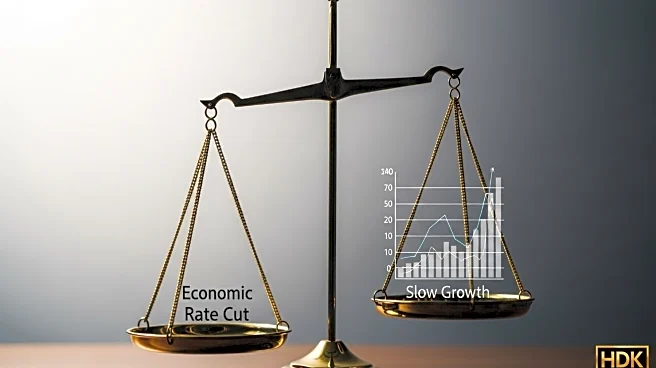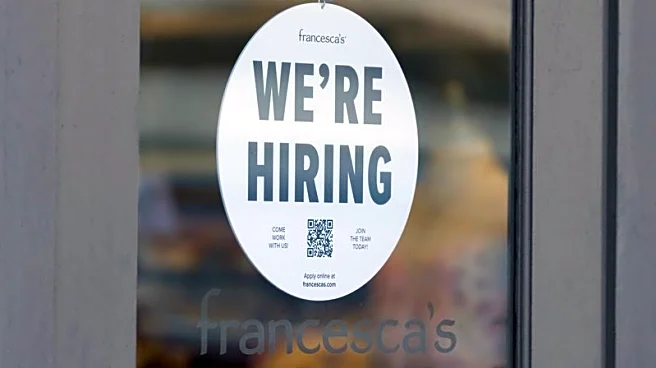What's Happening?
The U.S. labor market is showing signs of weakening, with private-sector hiring rising less than expected in August. According to data from ADP, private payrolls increased by only 54,000, falling short of the 75,000 forecasted by economists. This marks a significant slowdown from the revised gain of 106,000 in the previous month. Additionally, jobless claims have risen, with applications for unemployment benefits reaching their highest level since June. The Bureau of Labor Statistics reported a net loss in employment data for June, although July's figures were slightly revised upwards. Overall, the U.S. has added 598,000 jobs this year, a decrease from the 1,144,000 jobs added in the first eight months of 2024. The labor market's cooling is further evidenced by a decline in job openings, which fell to a 10-month low in July.
Why It's Important?
The current state of the labor market is significant as it reflects broader economic challenges facing the U.S. Despite a historically low unemployment rate, the rising jobless claims and reduced hiring plans indicate a cooling labor market. This situation is compounded by inflation rates that remain above the Federal Reserve's 2% target, suggesting a potential supply shock rather than a demand issue. The Trump administration's policies, including tariffs and immigration crackdowns, are contributing to these economic pressures. The manufacturing sector, in particular, is experiencing contraction due to higher import duties, affecting iconic companies like John Deere. The economic slowdown poses risks to consumer confidence and could impact President Trump's approval ratings on economic issues.
What's Next?
In response to the weakening labor market, the Trump administration may attempt to influence economic data reporting by replacing government employees with partisan operatives. Additionally, there may be increased pressure on the Federal Reserve to implement rate cuts to stimulate the economy. However, such measures could exacerbate inflation if the underlying issue is a supply shortage. The administration's approach to economic policy, including tariffs and immigration enforcement, will likely continue to shape the labor market and broader economic conditions. Stakeholders, including businesses and policymakers, will need to navigate these challenges to maintain economic stability.
Beyond the Headlines
The current economic situation highlights the complex interplay between policy decisions and market dynamics. The administration's focus on tariffs and immigration has introduced supply-side constraints, affecting manufacturing and labor markets. This scenario underscores the importance of balanced economic policies that consider both demand and supply factors. The potential manipulation of economic data raises ethical concerns about transparency and accountability in government reporting. As the U.S. economy navigates these challenges, the resilience of its institutions and the effectiveness of policy responses will be critical in determining long-term economic outcomes.













